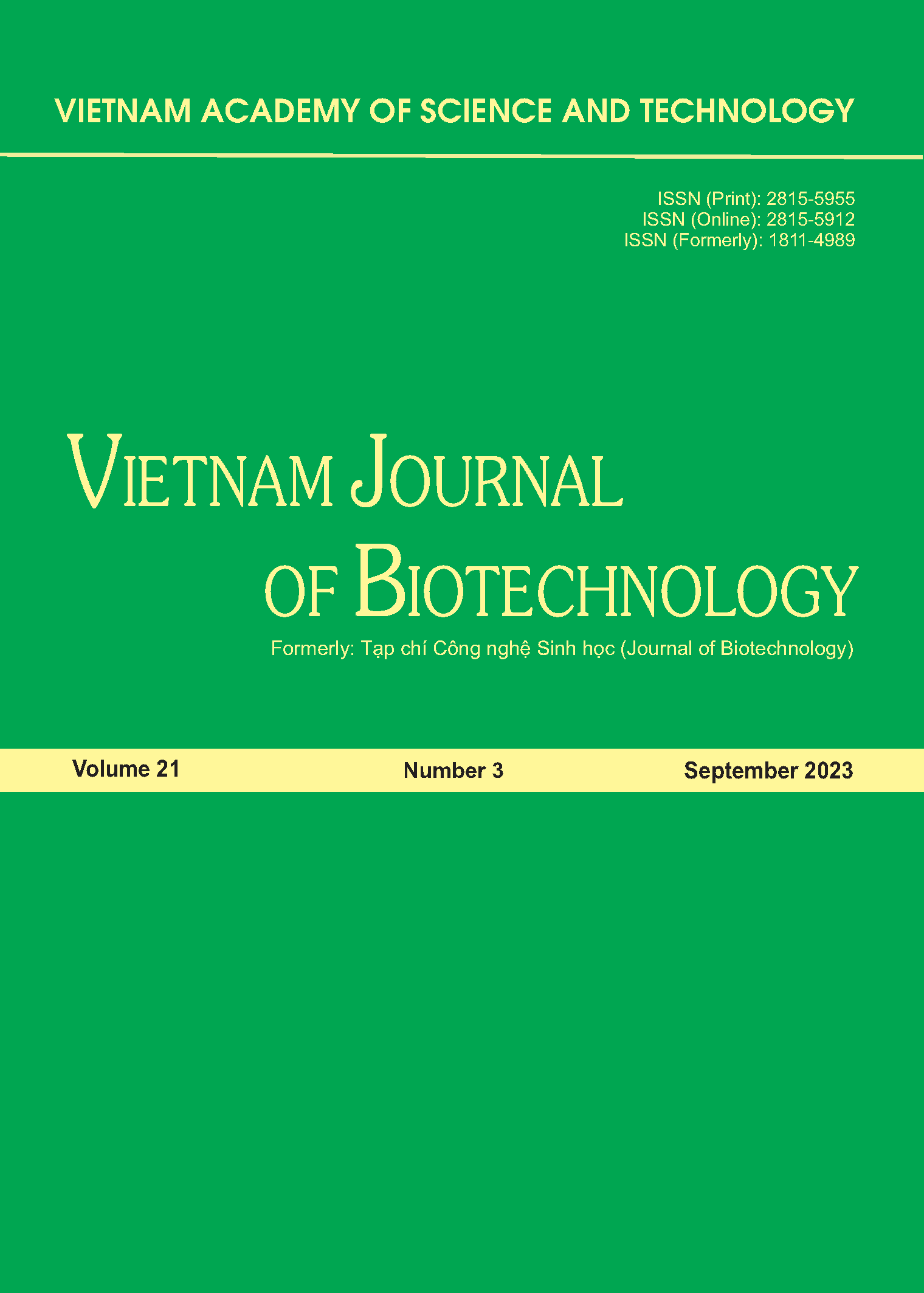Detection of an EDA mutation causing hypohidrotic ectodermal dysplasia in a Vietnamese patient
Author affiliations
DOI:
https://doi.org/10.15625/1811-4989/19383Abstract
Hypohidrotic ectodermal dysplasia (HED) is a rare disease characterized by abnormal development of the structures derived from the ectoderm layer, including hair, teeth, nails, and sweat glands. The most observed form of HED, which is known as X-linked hypohidrotic ectodermal dysplasia (XLHED), is commonly attributed to genetic abnormalities in the ectodysplasin A (EDA) gene. We have successfully discovered a known mutation c.1045G>A (p.A349T) in a Vietnamese proband who displayed the main symptoms of XLHED using PCR and Sanger sequencing. Furthermore, the segregation of the mutation showed that the mother, who exhibited a normal phenotype, was a carrier of the mutation, while the father was hemizygous for the wild-type allele. The identification of the mutation c.1045G>A (p.A349T) contributes to HED research worldwide and can be used for genetic counseling in Vietnam.







